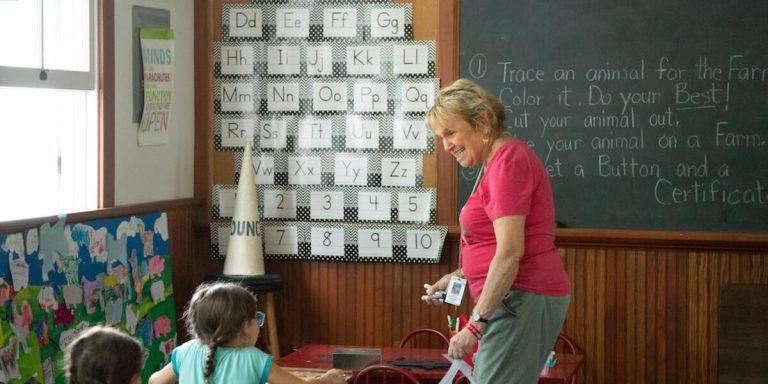Reading Comprehension Strategies: Enhancing Understanding in Young Learners
Developing reading comprehension strategies is pivotal to a child’s overall academic success, especially during their formative elementary school years. These skills, which include decoding words and understanding context are fundamental building blocks for children as they learn to interact with the world around them. This article aims to provide various effective techniques that can significantly enhance your young learner’s ability in this aspect.
These approaches aren’t just about improving literacy; it’s also about teaching kids how to comprehend what they read fully – recognizing ideas, themes and using critical thinking. With these strategies at hand, parents and educators will be better equipped in guiding children towards becoming proficient readers who don’t merely ‘read’ but truly understand texts at their core.
Did you know?
Did you know? Children who visualize as they read not only have a richer reading experience but also significantly improve their comprehension skills. This mental imagery acts like a cognitive map and increases recall and understanding of the text (Gambrell, L.B., & Bales, R.J. 1986).
Understanding the Basics of Reading Comprehension Strategies
In the era of digital communication and fast-paced information consumption, elementary school education in 2023 has transformed significantly. Among these changes is a renewed focus on reading comprehension strategies as an essential approach to support learning outcomes in children. Understanding the basics of these strategies becomes crucial for parents and educators alike.
Reading comprehension isn’t just about deciphering words; it’s also about processing their meanings, grasping the context they’re used in, visualizing underlying scenarios and relating them to existing knowledge or experiences. Therefore, when we talk about basic reading comprehension strategies for grade-schoolers—let’s say between six to ten years old—we are essentially discussing how best to encourage kids’ higher-order thinking skills: analysis, synthesis of ideas culminating into understanding.
A variety of research-backed methods are employed by educators today that help boost students’ ability to comprehend what they read effectively – summarization being one strategy where readers note down main points after completing paragraphs or chapters so as not only remembering key details but also understanding overall themes. Predicting comes next – which involves making educated guesses regarding unfolding narratives while inferring delves deeper into drawing conclusions from given contexts without explicit mention.
Remember that each child would respond differently based upon individual cognitive capability levels hence there might come times wherein mix-matching strategically could yield better results than sticking with singular approaches necessarily.
Defining Key Components in Primary Education
Reading comprehension strategies hold immense importance in primary education, as they form the building blocks for a child’s future learning journey. They equip children with the ability to understand and interpret text on multiple levels, nurturing their cognitive development while strengthening their reading skills.
One key component of these strategies is ‘textual analysis’. This involves guiding students to scan through texts while understanding its main idea or theme. It encourages youngsters to actively decode passages by asking themselves relevant questions and linking new information with prior knowledge.
Next comes ‘vocabulary expansion’ which enables learners to comprehend more complex materials over time. Parents and teachers can make use of flashcards or educational games that challenge them into relatable contexts thereby fostering connections between words and world around them.
The Role of Phonemic Awareness and Decoding Skills
In the sphere of elementary school education, reading comprehension strategies play a vital role. One unique yet significant facet is understanding and developing phonemic awareness and decoding skills.
Phonemic awareness encompasses the ability to differentiate individual sounds or ‘phonemes’ in words. It’s like threading beads on a string; every bead matters for an enchanting necklace and so do these sounds for verbal communication. This skill needs nurturing from early childhood as it serves as one of the key stepping stones towards efficient reading capabilities, enhancing their vocabulary foundations fundamentally.
Equally important are decoding skills – think of them being akin to deciphering coded messages! Children learn how letters combine to form specific sounds which further blend into meaningful words – pretty much unlocking written language’s magical world!
When children begin mastering both phonemic awareness and decoding abilities, they’re not merely learning new terms but immersing themselves fully into each word’s essence. They comprehend better due to clear pronunciation while also gaining immense confidence in exploring unknown vocabularies independently – all thanks to proficient cognitive resources at hand that process even complex sentences effortlessly.
In 2023, innovative teaching methods have fostered these essential traits among young learners more effectively than ever before.
1) Fun-filled Phonetics: Engaging kids through enjoyable games revolving around sound recognition boosts interest levels.
2) Visual Aids: Flashcards with vivid imagery associated with relevant letter-sounds bring alive abstract concepts.
Implementing Effective Techniques for Improved Literacy
In the realm of elementary school education, implementing effective techniques for improved literacy is critical. One area particularly worth focusing on to enhance a child’s reading and comprehension skills is applying specific ‘reading comprehension strategies’. These strategies not only aim to improve your young one’s ability to understand what they are reading but also develop their love for books and learning.
Thoughtful implementation involves identifying each student’s unique needs as no two children learn alike. Some may find it helpful to visualize scenarios or summarize content in their own words, while others might need guided questioning that encourages them to predict outcomes or form connections between new materials and familiar concepts.
Embracing these techniques can be pivotal when seeking substantial improvement in children’s reading abilities. Each strategy should be introduced progressively ensuring every youngster feels supported throughout their journey of building robust literacy skills. Teachers play a significant role here by fostering an inclusive classroom environment where making mistakes while learning isn’t frowned upon but seen as part of growth.
The goal is multifold: refining readability capabilities, cultivating willing learners eager about knowledge expansion through literature exploration, equipping students with tools necessary for academic success beyond 2023! Time invested into developing potent reading comprehension strategies will doubtless yield beneficial fruit both inside classrooms walls today—and far outstretching decades hence—towards lifelong wisdom acquisition proficiency journeys yet untreaded.
Encouraging Interactive Read-Aloud Sessions
Interactive read-aloud sessions are a powerful tool that can significantly enhance a child’s reading comprehension skills. They not only provide an entertaining environment but also lay the foundation for understanding complex narratives, promoting vocabulary acquisition and fostering love for books.
Firstly, to make these interactive read-aloud sessions effective, it is crucial to choose age-appropriate and engaging content. Invest time in finding stories with relatable themes or characters which can excite young learners’ imagination. In 2023’s modern digital era where countless e-books are available at our fingertips, ensure quality over quantity by carefully selecting material that aligns with your educational objectives.
Next step is preparation – know your book as well as you would like pupils to understand it! Read through beforehand so you’re ready with appropriate stopping points where kids could interact – discuss plot developments or predict what might happen next. These seemingly simple pauses stimulate critical thinking while keeping their interest intact.
An important element of any successful storytime session involves using voice modulation techniques that mirror the narrative tension present within the tales themselves — lending suspenseful scenes whispers of anticipation; cheery parts filled laughter lines; sombre sections bearing subdued tones etcetera!
Utilizing Graphic Organizers to Enhance Understanding
Graphic organizers are one of the most valuable tools parents and educators can implement to boost reading comprehension amongst elementary school children. These visual frameworks aid in organizing abstract information, fostering a more profound understanding.
In this digital age, graphic organizers have morphed beyond traditional pen and paper models. With myriad online resources available today, they’ve taken on interactive formats – offering dynamic ways for students to interact with text.
Another widely used organizer is the Venn Diagram – perfect when comparing contrasting aspects of stories or historical events being taught at an elementary level. It highlights similarities and differences vividly which enhances learning experience significantly.
The KWL chart (What I Know / What I Want To Learn/ What I learned) also plays a crucial role in cultivating proactive learners by engaging them actively during each stage of lesson progression — pre-reading , while-reading & post-reading stages respectively.
Implementing such visually stimulating reading comprehension strategies fosters active engagement among kids—an essential aspect for imparting successful literacy skills that last lifelong.
Assessing Progress in Young Readers’ Comprehension Abilities
Assessing progress in young readers’ comprehension abilities is an essential aspect of elementary school education in 2023. Reading comprehension strategies are vital tools that parents and educators can employ to enable children understand, interpret, and engage with the text at a deeper level. Due to technological advancements and increased recognition for student-centric teaching techniques, these strategies have evolved significantly over recent years.
Progress assessment entails:
- Gauging if a child can associate new information from a book with prior knowledge.
- Assessing the ability to draw logical conclusions from context clues within the story.
- Evaluating if the reader can predict future outcomes based on their understanding.
Numerous scientifically backed methods exist today to guide this process, focusing on enhancing various aspects of reading comprehension skills in youngsters.
Particularly helpful are interactive models that encourage active engagement; here students not only consume content but also produce it via discussions, questioning sessions etc., thus facilitating better retention rates through full immersion into textual worlds often vastly divergent compared against real life experiences one may encounter otherwise daily.
Another key focus area concentrates around visual aids: graphics organizers act like mental map creators enabling learners track how various elements tie up together throughout narrative progression thereby enrichening overall learning experience exponentially.
Benchmarking Success with Standardized Reading Tests
Benchmarking the success of young readers can be a challenging task. However, using standardized reading tests and incorporating effective reading comprehension strategies have proven to be beneficial in assessing progress.
Standardized Reading Tests are an integral part of elementary education system around the globe. These critically acclaimed tools help educators gauge learners’ proficiency levels objectively with relative ease. Notably, they also provide a standardized metric that allows for easy comparison between distinct groups of students or syllabus standards.
One popular method is to implement Standardized Reading Comprehension assessments like STAR Reading Test or The Gray Oral Reading Test (GORT-5). These universally acknowledged examinations focus on understanding semantics, syntax and phonology among other key components; offering invaluable insight into how well students comprehend texts at their grade level.
The primary objective here is not just about determining raw scores but recognizing areas where improvements can occur – whether it’s vocabulary enhancement, sentence construction skills, or drawing context from given works. Consequently giving us crucial data points for creating tailored future study plans aimed at improving these identified weak spots.
Strategic classroom activities that enhance reading comprehension are a vital supplement alongside formal testing. These activities could include:
These hands-on exercises perfectly complement standard exam-based evaluations by reinforcing learned concepts practically thus leading to better results over time while keeping learning fun!
Incorporating Formative Assessments in Classroom Activities
Understanding a child’s reading comprehension abilities is pivotal to their academic growth, especially in elementary school. Incorporate formative assessments into classroom activities to provide both teachers and parents with valuable insights into a youngster’s grasp of the written word. Here are some tips for effectively using these assessments:
1. Infuse Assessments with Everyday Lessons: Instead of distinct tests, seamlessly blend your evaluations with daily instructions. For instance, after narrating a story or discussing an event in class, pose unplanned questions about it.
2. Engage Students Actively: Encourage group discussions or pair-work where pupils explain concepts to each other using text evidence.
3.Brandish Retelling Techniques: Ask students to retell stories orally or through drawings – an interactive way to gauge understanding while nurturing creativity.
4.Use Reading Logs as Tools for Reflections: Request them to jot down what they’ve read along with their thoughts and interpretations – reading logs aid self-evaluation processes besides enhancing writing skills.
5.Employ Predictive Activities: Before starting a new chapter/unit/theme encourage predictions regarding its contents based on title/images/prior knowledge—helping strengthen inferential thinking linking prediction success/failure back to comprehension levels.
6.Adopt digital tools/apps which simulate real-life scenarios testing various facets like vocabulary usage/decoding strategies/inferencing making technology enjoyable learning lens evaluating progress ‘game-like’ environment.
Conclusion
In wrapping up, remember that developing reading comprehension strategies is not a sprint but rather a marathon. Progress will be gradual and every child learns at their own pace. Therefore, keep encouraging the little ones to hit their books with curiosity and continue polishing these techniques as they grow older.
Don’t stop here on your journey of educating young minds though! The vast library of resources available on our website offer further insights into enhancing childhood education. Whether you are an educator looking for creative teaching methods or a parent seeking support in educational goals— we’ve got you covered all around!
Time spent understanding children’s learning processes today can lead to empowered adults tomorrow.







